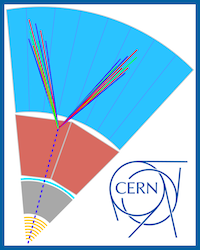Speaker
Description
Many extensions of the standard model (SM) predict the existence of neutral, weakly-coupled particles that have a long lifetime. These long-lived particles (LLPs) often provide striking displaced signatures in detectors, thus escaping the conventional searches for prompt particles and remaining largely unexplored at the LHC.
I will present a first search at the LHC that uses a muon detector as a sampling calorimeter to identify displaced showers produced by decays of LLPs. The search is sensitive to LLPs decaying to final states including hadrons, taus, electrons, or photon, LLP masses as low as a few GeV, and is largely model-independent. The search is enabled by the unique design of CMS muon detectors, composed of detector planes interleaved with the steel layers of the magnet flux-return yoke. Decays of LLPs in the muon detectors induce hadronic and electromagnetic showers, giving rise to a high hit multiplicity in localized detector regions that can be efficiently identified with a novel reconstruction technique. The steel flux-return yoke in the CMS detector also provides exceptional shielding from the SM background that dominates existing LLP searches.
The most stringent limits to date from LHC data are set on the branching fraction of the Higgs boson decay to a pair of LLPs with masses below 10 GeV. This search also provides the best limits for various intervals of LLP proper decay length and mass. Finally, this search sets the first limits at the LHC on a dark quantum chromodynamic sector whose particles couple to the Higgs boson through gluon, Higgs boson, photon, vector, and dark-photon portals, and is sensitive to branching fractions of the Higgs boson to dark quarks as low as $2 \times 10^{-3}$.
